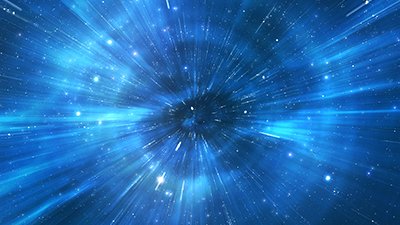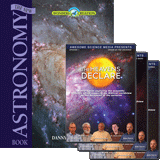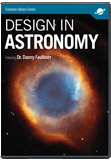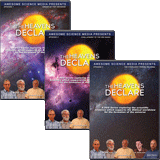Massive Galaxies in the Early Universe
Lighting the Way to Dusty Death for Evolutionary Theories?
Nearly a century ago, Edwin Hubble found that there is a linear relationship between redshifts and distances of galaxies. We now call this the Hubble relation, or the Hubble law. The most straightforward interpretation is that the universe is expanding, but keep in mind that this is an interpretation of the Hubble law. The dominant cosmological model today, the big bang, is based upon an expanding universe. Within the big bang model, it is believed that most galaxies formed approximately the same time early in the universe, about 13 billion years ago. If the speed of light is finite, then there is a look-back time with increasing distance. That is, we will see the most distant galaxies (the ones with the greatest redshift) as they appeared in their youth. However, we will see nearby galaxies (the ones with the lowest redshift) much closer to their current age. Hence, the study of very distant, high redshift galaxies will lead to a greater understanding of how galaxies and stars formed. This is very important in modern cosmology because astronomers have developed elaborate theories of how the first stars and galaxies must have formed within the big bang model. A key part of this is the belief that in the early universe there must have been intense star formation, with stars forming at a much higher rate than they form today.
Astronomers use the letter z to indicate the redshift of a galaxy. If z = 1, it means that light is shifted to longer wavelengths (toward the red end of the spectrum) by 100%. If z = 2, then the light is shifted 200% to longer wavelengths, and so forth. Previous studies had identified massive elliptical galaxies at redshifts of 3¬–4, corresponding to times 1 ½ – 2 billion years after the big bang. But these galaxies don’t have inferred star formation rates to explain their existence. Therefore, there must have been galaxies and their stars forming even earlier. Thus, there has been a search for galaxies with z > 3. Galaxies in this range of redshift typically have too little mass or too little inferred star formation to account for the giant elliptical galaxies at lower redshift. At high redshift there are starburst galaxies, so-called because of their inferred high star formation rates, but the observed density of starburst galaxies at high redshift is far too low to account for the massive galaxies that we see. Therefore, for evolutionary astronomers, searching for massive galaxies at high redshift has been a priority in understanding both the formation of such galaxies and the rate of star formation in the early big bang universe.
Problem Solved?
A recent study claims to have made progress in solving this problem. The study focused on 39 galaxies that are bright at a wavelength of 4.5 micrometers (4.5 μm) but so faint as to be invisible in ultraviolet, visible, and near-infrared wavelengths. This discrepancy could be explained by a combination of high redshift and galaxy dust absorption within the galaxies. This research observed the 39 galaxies with the Atacama Large Millimeter/submillimeter Array (ALMA) in Chile at a wavelength of 870 μm, but it also combined archival data from two orbiting infrared telescopes, the Spitzer Space telescope (24 μm) and the Herschel Space Observatory (100 μm, 160 μm, 250 μm, 350 μm, and 500 μm), as well as data from two other ground-based observatories, the James Clerk Maxwell Telescope in Hawaii, using the SCUBA-2 (Submillimetre Common-User Bolometer Array), and the Very Large Array (VLA) in New Mexico operating at a frequency of 1.4 GHz. The data suggest that the galaxies are very dusty with a high rate of star formation. Redshifts were derived for each of the galaxies, yielding redshifts between 3 and 6. Within the current big bang model, a redshift of 6 corresponds to a time when the universe was only a billion years old. The paper also has estimates of the spatial density of these galaxies.
Current theories of the formation of galaxies within the big bang model do not allow for such galaxies to exist at such an early time in the universe.
The authors of the paper were confident that they had identified enough young, dusty, massive, star-forming galaxies at high redshift to explain the number of massive galaxies at smaller redshifts, corresponding to older, more mature galaxies. However, they were clear that problems remained. For instance, current theories of the formation of galaxies within the big bang model do not allow for such galaxies to exist at such an early time in the universe. If this new study is widely accepted, it obviously will require revision of these theories.
Heavy Galaxy Dust
But this new study raises another problem that no one seems to be talking about. The big bang model posits that the universe began with only hydrogen and helium, and a very tiny amount of lithium. But cosmic dust is made of heavier elements, such as silicon, oxygen, and iron. Where did this galaxy dust come from? Supposedly, the heavier elements were forged inside the cores of some of the first stars. According to the theory of chemical evolution in the universe, these early stars had to explode to spew the products of their nucleosynthesis into space. But this material had to mix with matter in space and then form into at least a second generation of stars to form dust particles that in turn had to be lofted out into space. Realistically, this process of creating enough galaxy dust to account for these distant dusty galaxies probably required several generations of stars. This repeated process of star formation, nucleosynthesis, explosion, and incorporation of the newly created heavier elements into new stars takes considerable time, so it doesn’t appear that there was enough time to produce this much galaxy dust in the first billion years of the universe. This sort of problem has been around for a while, but this most recent study greatly increases the problem.
Of course, this galaxy dust isn’t a problem with biblical creation. Some of this dust could have been produced in a recent creation scenario, but God could have created the universe with galaxy dust from the beginning. According to the Bible, the universe didn’t go through a long, gradual process to come into existence. Rather, God spoke the stars into existence (Psalm 33:6). And God made everything in six days (Genesis 2:1-3; Exodus 20:11), not over billions of years.
Recommended Resources

Answers in Genesis is an apologetics ministry, dedicated to helping Christians defend their faith and proclaim the good news of Jesus Christ.
- Customer Service 800.778.3390
- © 2024 Answers in Genesis







